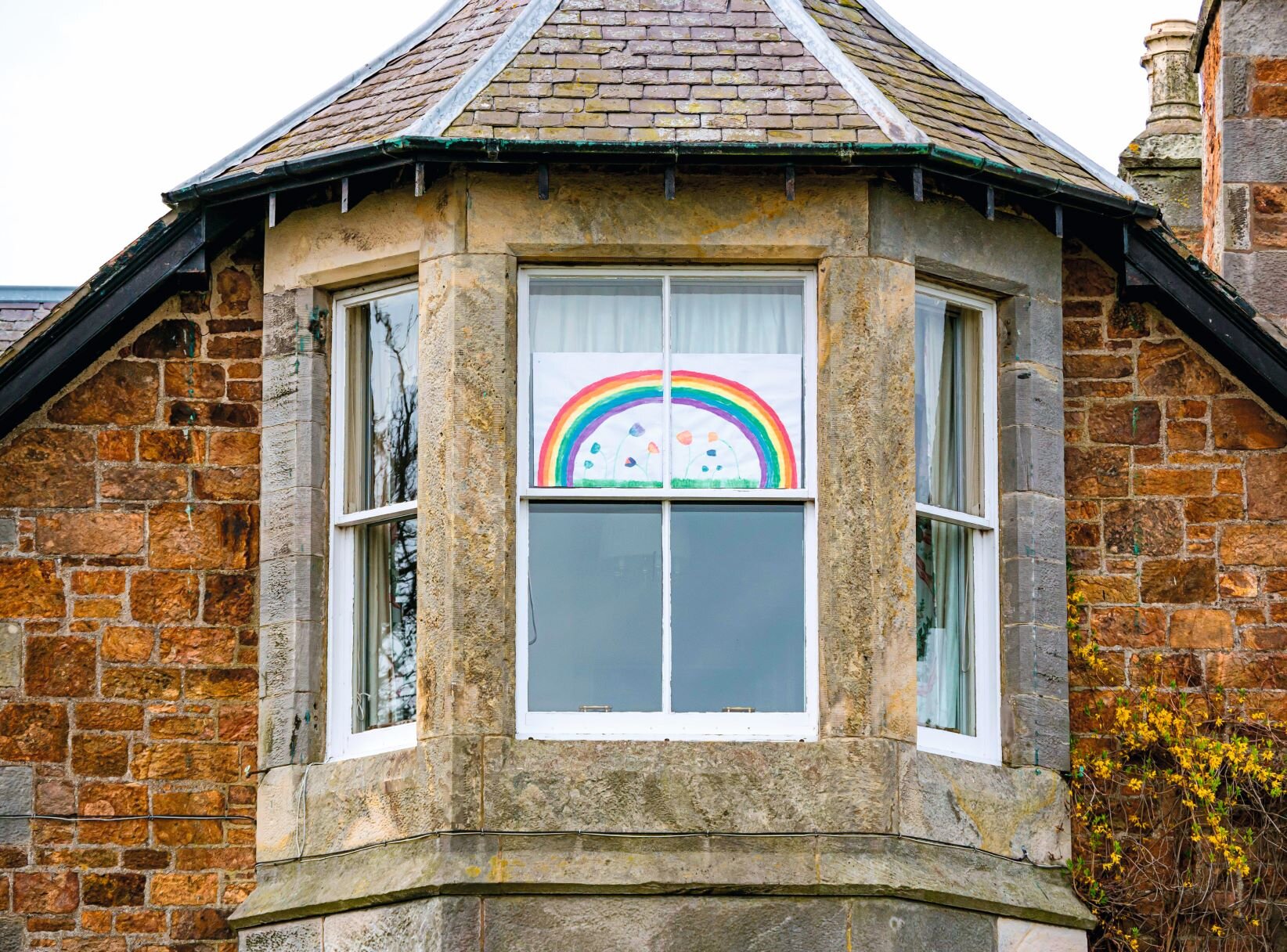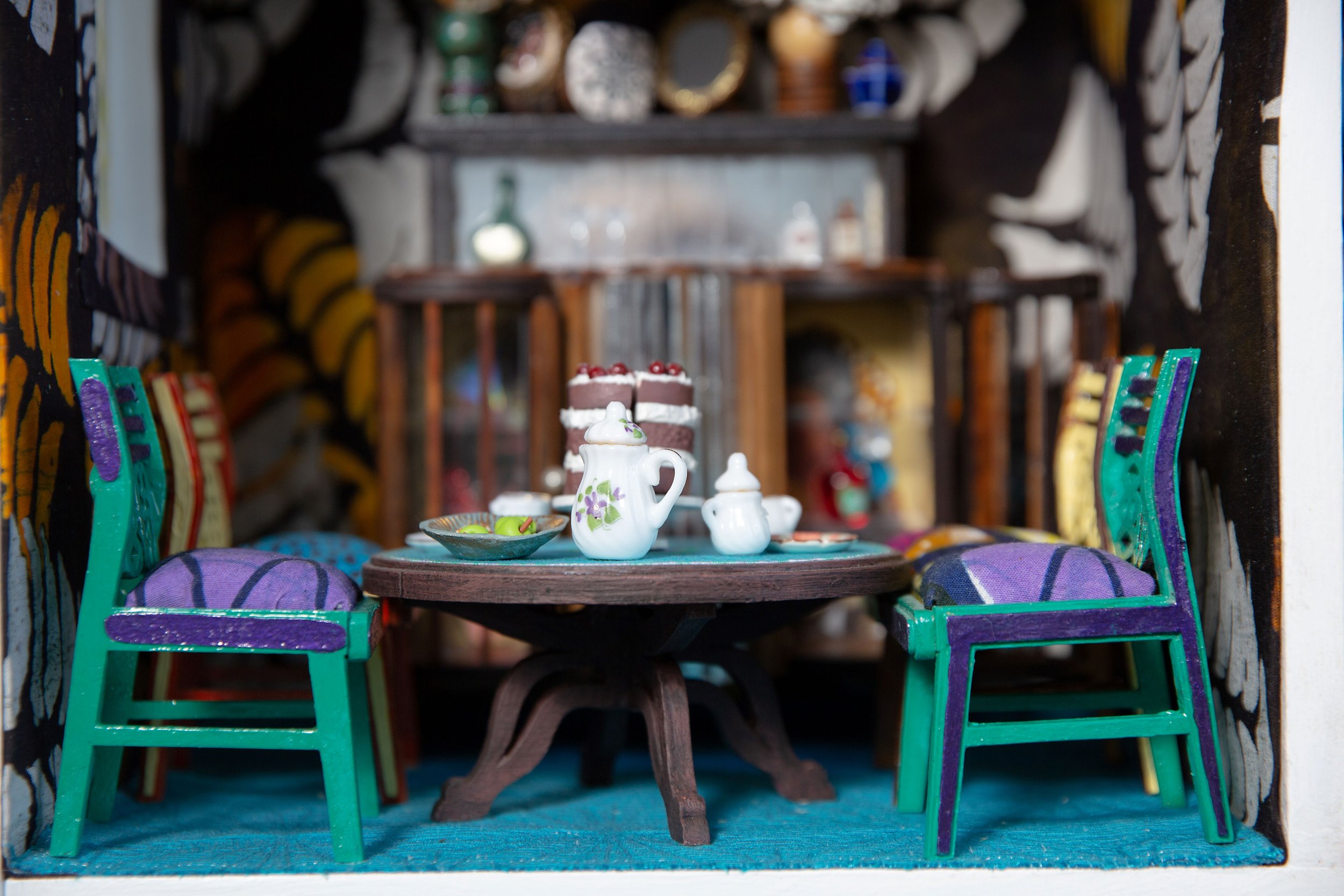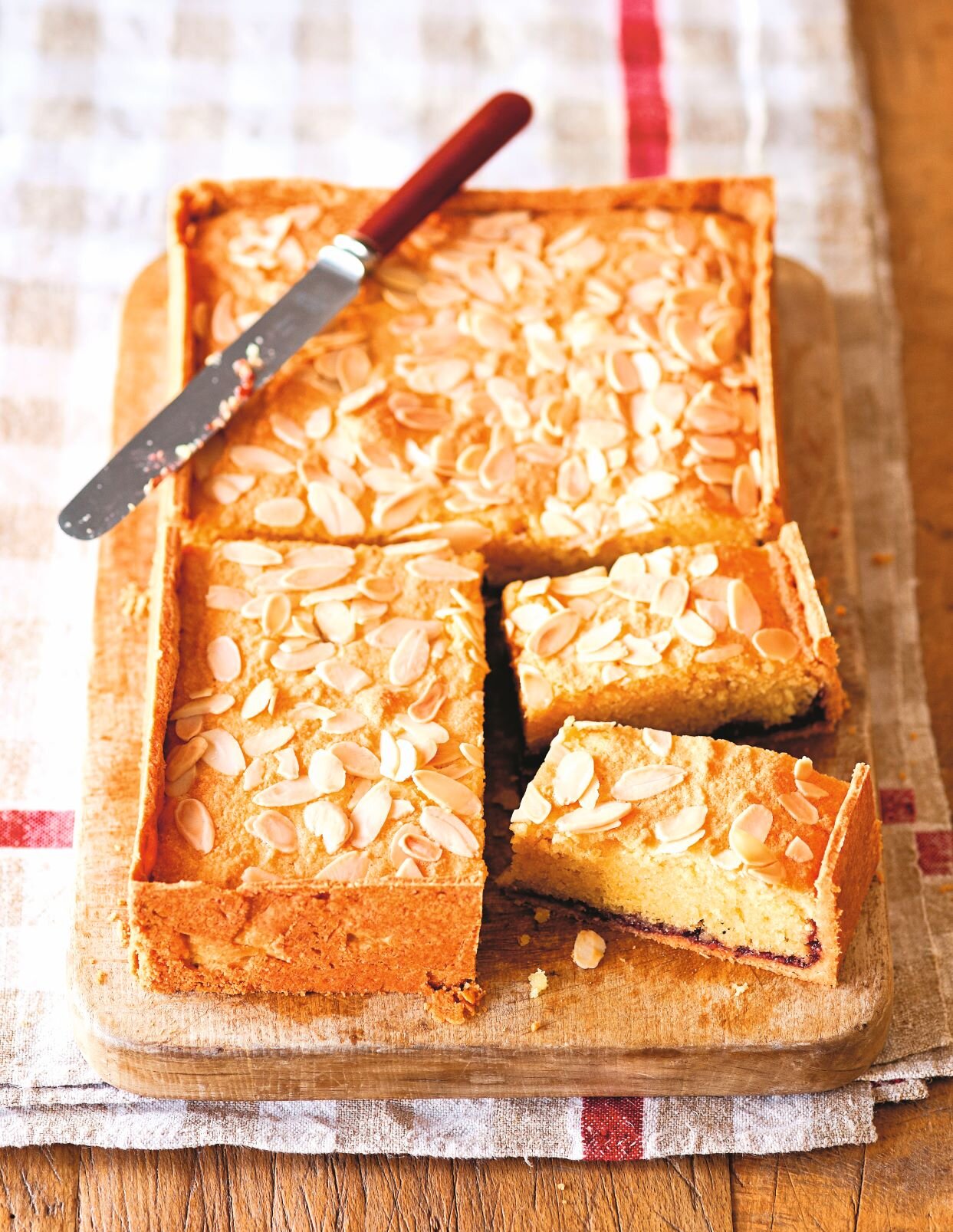Rainbows are gracing many of our windows right now as a symbol of hope but they weren’t the first symbol to have been displayed on our windows and doors as a sign of solidarity, welcome or more
From the Icthus ‘fish’ symbol to let passers-by know you were a Christian, to a European flag to let them know you voted Remain, we’re all quite keen on displaying signs on the outside of our homes as messages to others. At Halloween, a pumpkin in the window is a sign trick-or-treaters are welcome, at Christmas a wreath goes out to welcome in both neighbours and the season.
Here are a few more secret signs that people have displayed to send a clandestine (or not so clandestine) message to others over the years, that you might not know about.
Candles
When practising the Catholic faith was outlawed under British repression in Ireland, priests went underground, conducting masses in secret. Catholics would leave a candle burning in their window and the door unlocked to let priests know they could sneak in for a quick bit of clandestine Catholicism. When the British queried the practice they were told it was to represent the pure and open of heart welcoming Our Lady and the Christ child into their homes. Sneaky!
Secret paintings
In 18th Century South Africa, the Ndebele people were at war with the neighbouring Boers. They suffered great losses and terrible treatment at the hands of the Boers and began to express their grief and anger with symbols painted on their houses to communicate with other Ndebele groups. The Boer farmers thought it was simply cultural art so allowed it to continue.
Blood on the doorposts (or something slightly less frightening if you prefer)
In the story of the Passover, Moses tells the enslaved Israelites to paint their doorposts with the blood of a lamb they have sacrificed. When the angel of death passes over their houses, those with blood were ‘passed over’ and the Israelites remain safe, while the firstborn son of every Egyptian home died. Some Jews still mark this, the beginning of their safe passage out of Egypt, with a decorative piece of red cloth over the door as they celebrate Passover each year., cloth being a little less of a terror to get off paintwork than lamb’s blood.
Horseshoes
A message to Old Nick himself to warn him off. The story goes that St Dunstan (patron saint of blacksmiths) was visited by the devil who demanded a horseshoe for one of his cloven hooves. St Dunstan nailed a red hot horseshoe to his hoof and said he would only remove it if the devil promised to respect the horseshoe and never again visit any home with one displayed. (Sadly, this doesn’t work for political canvassers, junk mail and the like.)
Pampas grass in the front garden
Said to be a sign that the occupants are, ahem, ‘swingers’ looking for willing participants, sales of the sharp-leafed plant have apparently plummeted in recent years as home-owners have cottoned on that they may be attracting unwanted attention.
Rude graffiti
In ancient Rome, phalluses were carved everywhere but were often seen on doors and around windows as a symbol of protection or good fortune (and you thought horse shoes were weird). Rather charmingly, tiny phalluses were also used like arrows, pointing men in the direction of the nearest brothel. We’d say ‘when in Rome’ but perhaps best NOT to go carving any willies on windows if you’re visiting.
Hobo emojis
Around the turn of the 20th century in America, hobos (men travelling from place to place looking for work and hitching illegal rides on freight trains) would leave little hieroglyph style pictures all over the place, but often on doors, to give other hobos useful information such as where alcohol could be found, where good places were to get a train and where law-makers lived. A square and a circle each with a dot in meant ‘an ill-tempered man lives here’, a simple cat denoted ‘a kind lady lives here’. How reliable this all is, is uncertain - the tales of the hobo symbols were passed down by hobos themselves, who were known for enjoying a tall tale.
Quilts
Legend has it that on the Underground Railroad in the States (a network of people offering safe houses and passage to slaves escaping from the south) quilts were stitched with secret messages to aid escape and then hung from windows and clothes lines. Escaping slaves would know the house’s owners might help them and the quilts would give them information about where to go next and how to stay safe.
You can read more about rainbows and their history in our June issue, which is on sale now.
Buy this month's The Simple Things - buy, download or subscribe







